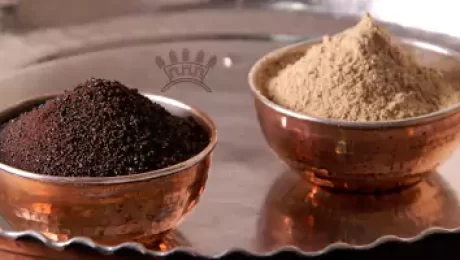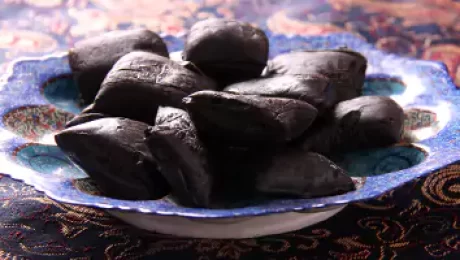Licorice Uses in Cooking
Licorice is a perennial herb which has been consumed in cooking and traditional medicine for a long time. Licorice is considered a natural sweetener and flavoring. Moreover, it has many benefits for our health and body. It is an effective remedy for digestive disorders, peptic ulcers, skin diseases, sore throat, respiratory problems and many others.
Sepidan Osareh Jonoob Co. is one of the prominent producers and exporters of licorice products in the world. This company is globally known as one of the best ones in the licorice market. A number of factors lead to this company’s achievements including very high-quality products, employing experienced staff, using modern machinery and instruments in production lines and laboratory, observing global standards in quality and management and many more.
Licorice uses in cooking, food and drinks dates back to ancient times. Licorice has been used as an ingredient in cooking, while creating a pleasant herbal taste and aroma which is similar to fennel and anise to some extent.
For using licorice in cooking, you can buy its woody root or its powder. For sweet recipe and confectionery use, its processed form like its extract block or paste is also available.
Based on the surveys done by Sepidan Osareh Jonoob Co., licorice is also used as a flavoring for a variety of sauces, including soy sauce and pickles. Licorice root is used to flavor dry food such as sugar, coffee, salt and some other ones. This plant is found in the combination of spices, especially for meat dishes, and goes well with the taste of food. It is used to flavor duck, lamb, pork, etc. Sometimes licorice is mixed with a little salt and added to meat as a condiment.
You can marinate different kinds of meat, prawns, oysters and other ones with licorice, or use it as dressing for raw or cooked food and vegetables.
Licorice flavor adapts really well to other tastes like ginger, mint, fennel and others.
Licorice in ice cream can be used as a syrup to make its taste distinctive. It should be noted that licorice sweetness is almost 50 times more than sugar.
It is used in sweets, candies, chocolates, pastilles, chewing gum and many others.
For making licorice tea, we can use licorice powder or ground licorice root. Licorice is also available in tea bags. Licorice dried leaves can be used for tea.
Licorice is also used in alcoholic beverages especially strong ones. It gives them strong and special taste.
Consequently licorice uses in cooking are various and you can use in different ways.
Generally, licorice is considered as a safe food ingredient. However, be careful about excessive licorice consumption. It could be dangerous for high blood pressure, pregnancy and breastfeeding, people with heart or kidney diseases.
Reference: iranlicorice.com
- Published in Licorice
Using Licorice in Candies
Using Licorice in Candies
Licorice is a traditional herb which has been consumed in cooking and traditional medicine for a long time. Licorice is considered a natural sweetener and flavoring. It creates a distinctive taste and aroma in products. Various industries use this plant because of its special features. Confectionary, candy and chocolate production are among these industries.
Sepidan Osareh Jonoob Co. presents some information about using licorice in candies which is presented in this article.
This natural sweetener has many advantages in comparison with artificial ones. It also protects our oral and dental health. In addition, licorice has some other benefits for our body such as weight loss, treatment of stomach disorders and fatty liver, strengthening the immune system etc.
Using licorice in candies and confectionary is very popular. Licorice has a long history of treating bronchitis, cough, cold and sore throat, digestive problems and many more.
In Europe and China, licorice root in dried and natural form has been very popular as a sweetener since ancient times. Over time, licorice candy makers have produced various flavors including strawberries, cherries, raspberries and many other flavors.
Licorice candy is produced in a vast variety of forms like twists, balls, jellybeans and so on. In some regions like North America, black licorice is usually used in confectionary and making candies.
At first licorice is sold in the form pastille, lozenge and rod to reduce sore throat and cough. This is how it found its place in making candies.
The sweetness in licorice is due to the existence of glycyrrhizin, which is 50 times sweeter than sugar.
Some candies are flavored with licorice root extract which have different shapes like tubes or chewy ropes. They are black licorice candies. By 20th century, these candies were popular among children and adults. Licorice candies are usually gelled and glossy. Licorice candies continue to be popular while in annual candy and chocolate market it devotes a considerable portion to itself.
licorice usage has been changed during the passage of time. In the beginning it was considered an herbal remedy and was used in drinks. Afterwards its culinary usage was noticed.
Some factories first produced boiled sweets but then produced jellies and licorice candies. Licorice in various shapes like pastilles and colored forms with fruit flavor was presented. Soft licorice in the twenties was introduced as a licorice candy.
Reference: iranlicorice.com
- Published in Licorice
Licorice Uses
Licorice is a perennial herb which has been consumed in cooking and traditional medicine for a long time. Licorice is considered a natural sweetener and flavoring.
Licorice uses are various due to its special properties. It is used as a natural flavoring and sweetener in confectionery and chocolate industry. There is a component in licorice called glycyrrhizin, which is 50 times sweeter than sugar. Licorice also generates a traditional, herbal flavor in these products.
Licorice uses in tobacco have been very popular for several reasons. Licorice maintains moisture in tobacco and prevents its dryness. This plant gives pleasant and sweet flavor to the tobacco products, due to existence of glycyrrhizin in licorice, it creates a sweet taste.
According to Sepidan Osareh Jonoob Company’s studies, anti-inflammatory, anti-bacterial, anti-viral and anti-oxidant elements in licorice, has made it a popular herb in cosmetics. It is used in creams, topical gels and ointments to treat skin diseases such as eczema, psoriasis, redness on skin surface and other skin problems. It keeps the skin surface clean, so it prevents infection.
As a non-artificial flavoring and sweetener, licorice uses in a vast variety of food products are well-known. Pastilles, ice cream, jellies, condiments, chewing gum, sauces, herbal tea, syrup, soft drinks, beer and alcoholic drinks are among these products.
Licorice in medicinal industry is consumed in syrups, capsules and pills, creams, topical gels and ointment, lozenges for sore throat, toothpastes and other forms of drugs.
In traditional medicine and herbalism, licorice has got a prominent place. It has been used as an herbal remedy to treat stomach disorders, inflammation, peptic ulcers, sore throat, eczema, psoriasis and other diseases.
Licorice is generally considered as a safe food ingredient as long as it is used at standard level. Individuals who suffer from diabetes, high blood pressure, liver and kidney problems, pregnant or breastfeeding women, people who had a stroke or heart attack, should consult with their doctor about using licorice and it is better to limit licorice usage.
Reference:iranlicorice.com
- Published in Licorice



